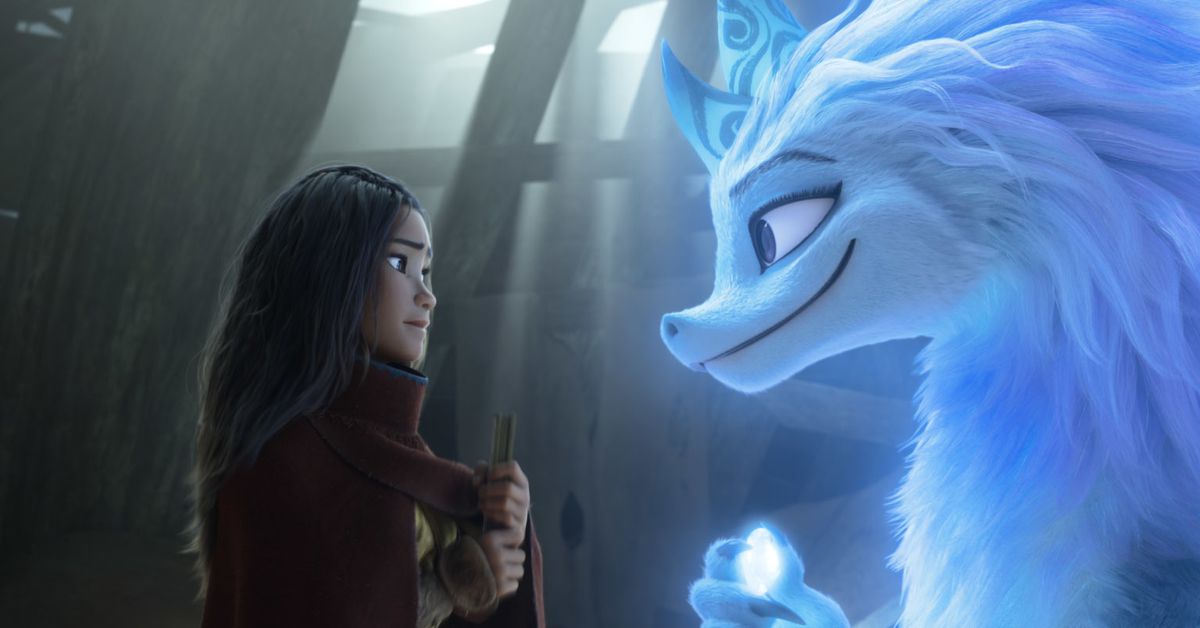With Disney’s Raya and the Last Dragon, I feel seen
Source: The Verge added 05th Mar 2021Raya and the Last Dragon is so much more than just the latest Disney flick, at least for me. Admittedly, I’m not even a huge Disney fan. But somehow because of Raya, there’s a little girl in me who finally feels seen.
Growing up in America, I hardly ever saw Asians in movies or television. And if I did, they were rarely brown and Southeast Asian like me. Finally, that’s changing.
Raya is voiced by Kelly Marie Tran, who is Vietnamese American. The film is inspired by diverse Southeast Asian cultures. The screenplay was written by Qui Nguyen and Adele Lim, who both trace their roots back to Southeast Asia. That’s one reason why there are so many cool cultural easter Eggs to find in the film. Raya’s name means “celebration” in Malay. She gets around by riding atop her animal sidekick named “Tuk Tuk,” who shares its name with Cambodia’s iconic motorbike-powered carriages (you’ll find similar sets of wheels across much of Southeast Asia).
In a teaser that almost made me cry (and I’m not a cryer), Raya wields what look like bamboo Arnis sticks — weapons used in Filipino martial arts. Her sword is reminiscent of the Indonesian kris. The epic combat scenes in the film also draw from fighting styles from Thailand, Malaysia, Cambodia, Laos, and Vietnam.
If a lot of that is unfamiliar to you, I don’t blame you. I was born in the Philippines and I didn’t even learn about Arnis until I was in college in the US. When you don’t see yourself reflected in the world around you, you lose out on a lot. That’s why it means so much to see Raya, brown and badass, wielding the same weapons that my ancestors did to fight.
As a whole, Asian Americans are already underrepresented in media — but Southeast Asians are often even more overlooked. “Asian American” is an enormous umbrella that encompasses many peoples, cultures, and languages. Lumping everyone into one group can obscure that diversity. Even worse, it can make some communities and the inequities they face invisible.
That’s a problem that’s often talked about as a lack of “disaggregated data” for the Asian American and Pacific Islander umbrella group. There often isn’t enough data collected that breaks down how experiences vary from group to group. For instance, many Southeast Asians came to the US as refugees after the Vietnam War or the Cambodian genocide by the Khmer Rouge — and that can make their migration stories, and the resources they have access to in America, very different than others who immigrated.
Poverty among Hmong Americans, many of whom came to the US as refugees after cooperating with the US during its “Secret War” in Laos, is twice as high — 26 percent — as it is among the Asian American community as a whole. That kind of data is necessary to dispel the Asian model minority myth, a stereotype that harms all Asian Americans because it wrongly assumes that our communities already have access to all the resources we need.
If you’ve seen Raya or even just its trailers, then you know that the movie is about how to bring communities together. Disaggregating data isn’t about dividing anyone. To bring folks together, you have to first see each other.
In Raya and the Last Dragon, we see its characters face adversity that fits into Southeast Asia’s modern history: there’s war, loss, hunger, and a long search for healing. The leading characters form a sort of blended family of refugees who are building a new world together after each of them have lost nearly everything.
I’m not saying the movie and its depictions are perfect. It’s a Disney-fied version of real life, after all. The movie still blends all the different cultures of Southeast Asia into a single fantasy world, and Disney’s been criticized in the past for creating a monolithic culture in movies like Moana and Mulan that again “aggregate” aspects from different peoples. Raya will probably face a whole lot of scrutiny, in part because of the pressure to fairly represent a huge group of people whose stories largely haven’t been told in mainstream media before. I’m already feeling the pressure from writing this post, knowing that there are things I’ll fail to see.
But in this case, I’ll take an argument about how a story should be told over no story at all. Hopefully, it opens up room for more stories to surface.
brands: Disney Diverse Dragon Fantasy First It New One other Umbrella WAS Writing
media: 'The Verge'
Related posts
Notice: Undefined variable: all_related in /var/www/vhosts/rondea.com/httpdocs/wp-content/themes/rondea-2-0/single-article.php on line 88
Notice: Undefined variable: all_related in /var/www/vhosts/rondea.com/httpdocs/wp-content/themes/rondea-2-0/single-article.php on line 88
Related Products
Notice: Undefined variable: all_related in /var/www/vhosts/rondea.com/httpdocs/wp-content/themes/rondea-2-0/single-article.php on line 91
Warning: Invalid argument supplied for foreach() in /var/www/vhosts/rondea.com/httpdocs/wp-content/themes/rondea-2-0/single-article.php on line 91
